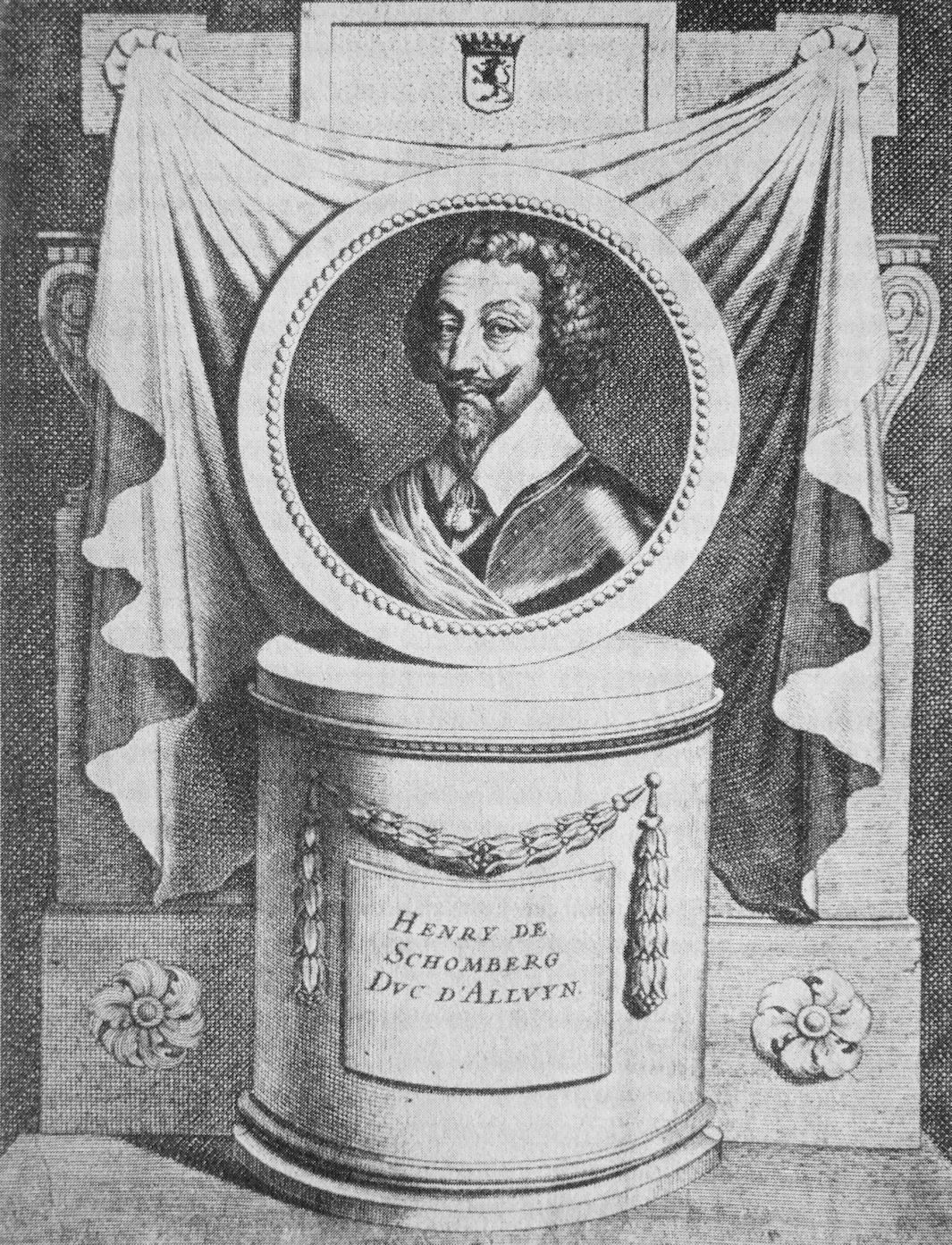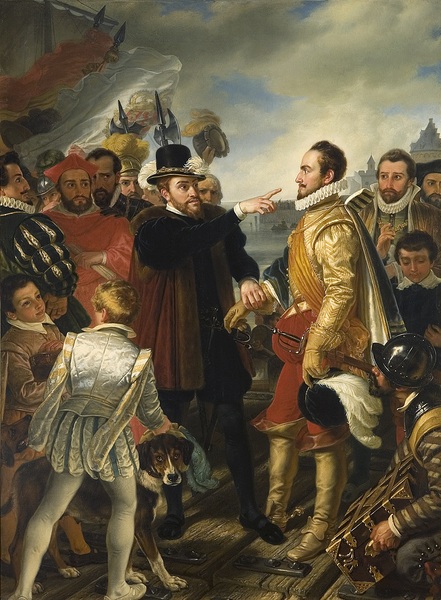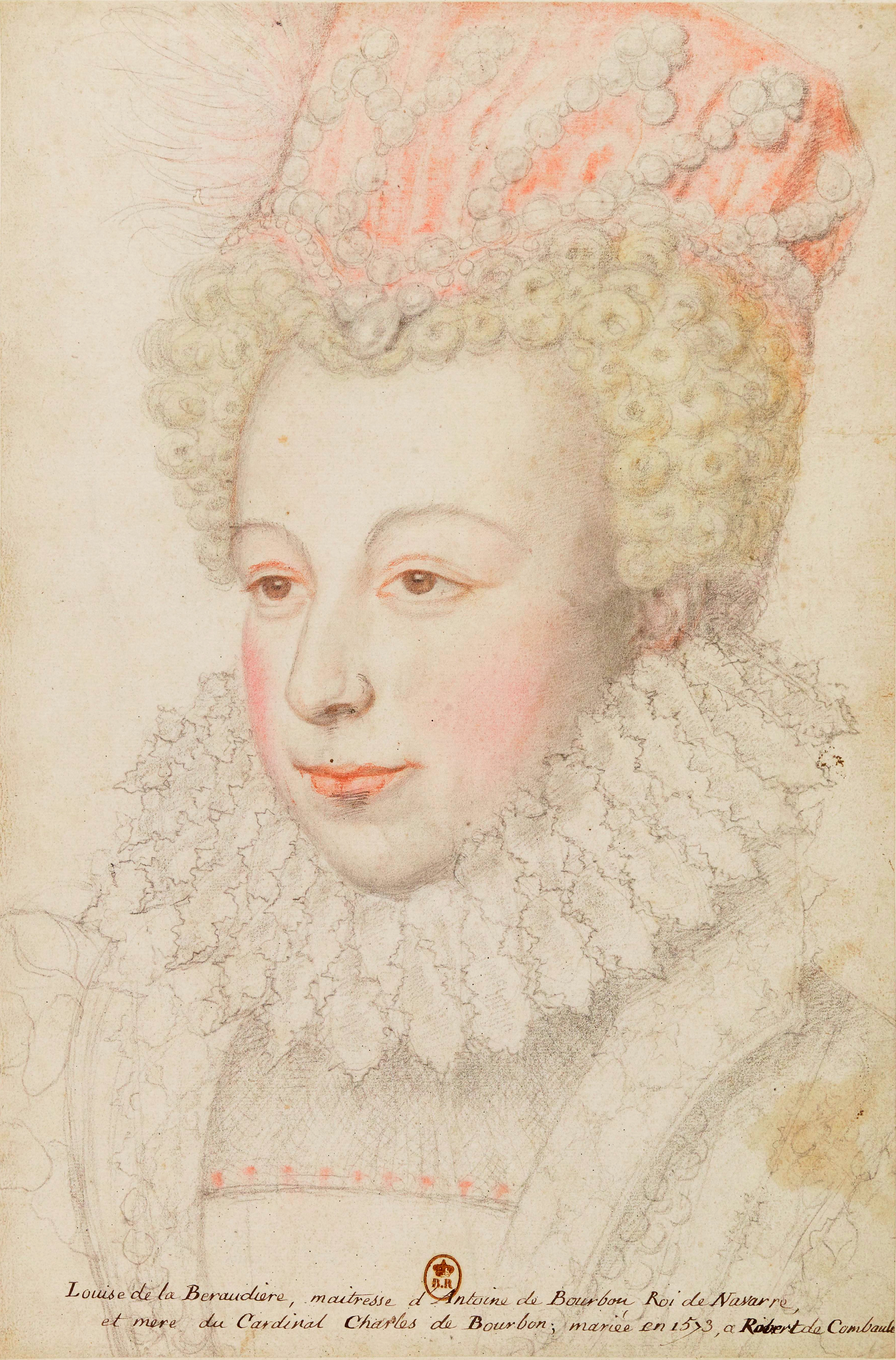|
Gaspard De Schomberg
Gaspard de Schomberg, comte de Nanteuil ( –17 March 1599) was a French soldier, courtier, diplomat, statesman and governor during the French Wars of Religion. Of Sachsen descent, Gaspard naturalised as French. He began his career during the first French War of Religion, when he fought with the Protestants against the crown, raising mercenaries in the Holy Roman Empire for the prince of Condé. The crown was impressed with his abilities, and co-opted his services, during the third civil war he would fight against the Protestants. In 1570 he was made a ''gentilhomme de la chambre du roi'', and then a ''Chambellan'' and in these years he would conduct a series of diplomatic missions to further French foreign policy with the princes of the empire. In 1573 he helped prepare the way for Anjou, travel to his new kingdom, the Polish-Lithuanian Commonwealth. When Anjou returned to France as Henri III Schomberg supported him in the civil war he inherited, reporting on the mercenary ... [...More Info...] [...Related Items...] OR: [Wikipedia] [Google] [Baidu] |
Henri De Schomberg
Henri de Schomberg, Comte de Nanteuil (1575 – 17 November 1632), was a Marshal of France during the reign of Louis XIII. Biography Schomberg was born at Paris. Superintendent of Finances from 1619 to 1623. He became Marshal of France in 1625. In 1628, Schomberg rescued Toiras in the Siege of Saint-Martin-de-Ré with an army of 6,000 men and some cavalry. Together with Toiras he pursued the retreated English army of the Duke of Buckingham, with great loss being sustained by the latter. Henri de Schomberg commanded Royal troops against the Huguenot rebellions, at the Siege of Privas. In 1632 he defeated Henri II de Montmorency at the battle of Castelnaudary (1 September 1632). He died soon after, of apoplexy, on 17 November of that year in Bordeaux. Family he married in 1598 with Françoise d'Espinay, daughter of Claude d'Espinay. She died on 16 January 1602, and had 2 children : *Charles de Schomberg (1601-1656), Marshal of France Marshal of France (french: Maréchal d ... [...More Info...] [...Related Items...] OR: [Wikipedia] [Google] [Baidu] |
Edict Of Nantes
The Edict of Nantes () was signed in April 1598 by King Henry IV and granted the Calvinist Protestants of France, also known as Huguenots, substantial rights in the nation, which was in essence completely Catholic. In the edict, Henry aimed primarily to promote civil unity. The edict separated civil from religious unity, treated some Protestants for the first time as more than mere schismatics and heretics and opened a path for secularism and tolerance. In offering a general freedom of conscience to individuals, the edict offered many specific concessions to the Protestants, such as amnesty and the reinstatement of their civil rights, including the right to work in any field, even for the state, and to bring grievances directly to the king. It marked the end of the French Wars of Religion, which had afflicted France during the second half of the 16th century. The Edict of St. Germain, promulgated 36 years earlier by Catherine de Médici, had granted limited toleranc ... [...More Info...] [...Related Items...] OR: [Wikipedia] [Google] [Baidu] |
Massacre Of Saint Bartholomew
The St. Bartholomew's Day massacre (french: Massacre de la Saint-Barthélemy) in 1572 was a targeted group of assassinations and a wave of Catholic mob violence, directed against the Huguenots (French Calvinist Protestants) during the French Wars of Religion. Traditionally believed to have been instigated by Queen Catherine de' Medici, the mother of King Charles IX, the massacre started a few days after the marriage on 18 August of the king's sister Margaret to the Protestant Henry of Navarre (the future Henry IV of France). Many of the wealthiest and most prominent Huguenots had gathered in largely Catholic Paris to attend the wedding. The massacre began in the night of 23–24 August 1572, the eve of the feast of Bartholomew the Apostle, two days after the attempted assassination of Admiral Gaspard de Coligny, the military and political leader of the Huguenots. King Charles IX ordered the killing of a group of Huguenot leaders, including Coligny, and the slaughter spread ... [...More Info...] [...Related Items...] OR: [Wikipedia] [Google] [Baidu] |
Spanish Netherlands
Spanish Netherlands ( Spanish: Países Bajos Españoles; Dutch: Spaanse Nederlanden; French: Pays-Bas espagnols; German: Spanische Niederlande.) (historically in Spanish: ''Flandes'', the name "Flanders" was used as a '' pars pro toto'') was the Habsburg Netherlands ruled by the Spanish branch of the Habsburgs from 1556 to 1714. They were a collection of States of the Holy Roman Empire in the Low Countries held in personal union by the Spanish Crown (also called Habsburg Spain). This region comprised most of the modern states of Belgium and Luxembourg, as well as parts of northern France, the southern Netherlands, and western Germany with the capital being Brussels. The Army of Flanders was given the task of defending the territory. The Imperial fiefs of the former Burgundian Netherlands had been inherited by the Austrian House of Habsburg from the extinct House of Valois-Burgundy upon the death of Mary of Burgundy in 1482. The Seventeen Provinces formed the core of the Habs ... [...More Info...] [...Related Items...] OR: [Wikipedia] [Google] [Baidu] |
Saint-Jean-d'Angély
Saint-Jean-d'Angély (; Saintongeais: ''Sént-Jhan-d'Anjhéli'') is a commune in the Charente-Maritime department in southwestern France. The commune has its historical origins in the Abbey of Saint-Jean-d'Angély. Royal abbey Founded in the ninth century to house a relic of Saint John the Baptist, and rebuilt in the 14th, 17th and 18th centuries because of repeated destruction, then later abandoned, the Abbey is now a listed building. It remains the most remarkable piece of architecture of Saint-Jean-d'Angély, a town which has kept all its medieval charm. Situated on the pilgrim route that led to Santiago de CompostelaThe route is registered by the UNESCO as part of the "World Heritage of Humanity" the edifice still constitutes a major stopping-off point towards Santiago de Compostela. Since 1989, the Royal Abbey has housed the Centre of European Culture, which has breathed new life into the Abbey by restoring it as a historical and cultural site and as a place for the exch ... [...More Info...] [...Related Items...] OR: [Wikipedia] [Google] [Baidu] |
Wolfgang, Count Palatine Of Zweibrücken
Count Palatine Wolfgang of Zweibrücken (german: Pfalzgraf Wolfgang von Zweibrücken; 26 September 1526 – 11 June 1569) was member of the Wittelsbach family of the Counts Palatine and Duke of Zweibrücken from 1532. With the support of his regent, his uncle Rupert (later made the Count of Veldenz), Wolfgang introduced the Reformation to Zweibrücken as early as 1537. Biography He was the only son of Louis II, Count Palatine of Zweibrücken and his wife Elisabeth of Hesse, daughter of William I, Landgrave of Hesse. His father died in 1532, so the regency of Palatinate-Zweibrücken passed to Louis' younger brother Rupert until 1543. In 1557 Wolfgang received the territory of Palatinate-Neuburg in accordance with the Contract of Heidelberg. In 1548 the Holy Roman Emperor Charles V occupied his Protestant territories and reintroduced Catholic practices. This imposition ended in 1552. The Peace of Augsburg of 1555 ended the religious conflict, and in 1557 several ecclesiasti ... [...More Info...] [...Related Items...] OR: [Wikipedia] [Google] [Baidu] |
William The Silent
William the Silent (24 April 153310 July 1584), also known as William the Taciturn (translated from nl, Willem de Zwijger), or, more commonly in the Netherlands, William of Orange ( nl, Willem van Oranje), was the main leader of the Dutch Revolt against the Spanish Habsburgs that set off the Eighty Years' War (1568–1648) and resulted in the formal independence of the United Provinces in 1648. Born into the House of Nassau, he became Prince of Orange in 1544 and is thereby the founder of the Orange-Nassau branch and the ancestor of the monarchy of the Netherlands. In the Netherlands, he is also known as Father of the Fatherland ('' Pater Patriae'') ( nl, Vader des Vaderlands). A wealthy nobleman, William originally served the Habsburgs as a member of the court of Margaret of Parma, governor of the Spanish Netherlands. Unhappy with the centralisation of political power away from the local estates and with the Spanish persecution of Dutch Protestants, William joined the ... [...More Info...] [...Related Items...] OR: [Wikipedia] [Google] [Baidu] |
Claude, Duke Of Aumale
Claude of Lorraine, Duke of Aumale (18 August 1526, Joinville – 3 March 1573, La Rochelle) was the third son of Claude, Duke of Guise and Antoinette de Bourbon. He was a prince of Lorraine by birth. Biography As part of the Treaty of Boulogne which ended the war of the Rough Wooing, Claude, Marquis of Mayenne and François de Vendôme, Vidame de Chartres, were among six French hostages sent to England. After his father died on 12 April 1550, Claude was allowed to come to Scotland, with a passport from Edward VI dated 11 May, to see his sister Mary of Guise. He wrote from Edinburgh on 18 May that he would view the strong places of the realm. Regent Arran gave him three horses and organised a banquet for him in Edinburgh on 21 May. In 1550, Claude inherited the title of Duke of Aumale, when his brother Francis succeeded their father as Duke of Guise. That year he was also appointed royal governor of Burgundy. During the Italian War of 1551–1559, Claude was capture ... [...More Info...] [...Related Items...] OR: [Wikipedia] [Google] [Baidu] |
Magyarország
Hungary ( hu, Magyarország ) is a landlocked country in Central Europe. Spanning of the Carpathian Basin, it is bordered by Slovakia to the north, Ukraine to the northeast, Romania to the east and southeast, Serbia to the south, Croatia and Slovenia to the southwest, and Austria to the west. Hungary has a population of nearly 9 million, mostly ethnic Hungarians and a significant Romani minority. Hungarian, the official language, is the world's most widely spoken Uralic language and among the few non-Indo-European languages widely spoken in Europe. Budapest is the country's capital and largest city; other major urban areas include Debrecen, Szeged, Miskolc, Pécs, and Győr. The territory of present-day Hungary has for centuries been a crossroads for various peoples, including Celts, Romans, Germanic tribes, Huns, West Slavs and the Avars. The foundation of the Hungarian state was established in the late 9th century AD with the conquest of the Carpathian Basin ... [...More Info...] [...Related Items...] OR: [Wikipedia] [Google] [Baidu] |
Ottomans
The Ottoman Turks ( tr, Osmanlı Türkleri), were the Turkic founding and sociopolitically the most dominant ethnic group of the Ottoman Empire ( 1299/1302–1922). Reliable information about the early history of Ottoman Turks remains scarce, but they take their Turkish name, ''Osmanlı'' ("Osman" became altered in some European languages as "Ottoman"), from the house of Osman I (reigned 1299–1326), the founder of the House of Osman, the ruling dynasty of the Ottoman Empire for its entire 624 years. Expanding from its base in Söğüt, the Ottoman principality began incorporating other Turkish-speaking Muslims and non-Turkish Christians. Crossing into Europe from the 1350s, coming to dominate the Mediterranean Sea and, in 1453, invading Constantinople (the capital city of the Byzantine Empire), the Ottoman Turks blocked all major land routes between Asia and Europe. Western Europeans had to find other ways to trade with the East. Brief history The "Ottomans" first ... [...More Info...] [...Related Items...] OR: [Wikipedia] [Google] [Baidu] |
Henry I, Duke Of Guise
Henry I, Prince of Joinville, Duke of Guise, Count of Eu (31 December 1550 – 23 December 1588), sometimes called ('Scarface'), was the eldest son of Francis, Duke of Guise, and Anna d'Este. His maternal grandparents were Ercole II d'Este, Duke of Ferrara, and Renée of France. Through his maternal grandfather, he was a descendant of Lucrezia Borgia and Pope Alexander VI. A key figure in the French Wars of Religion, he was one of the namesakes of the War of the Three Henrys. A powerful opponent of the queen mother, Catherine de' Medici, Henry was assassinated by the bodyguards of her son, King Henry III. Early life Henry was born on 31 December 1550, the eldest son of Francis Duke of Guise, one of the leading magnates of France, and Anna d'Este, daughter of the Duke of Ferrara. In his youth he was friends with Henry III, the future king, and at the behest of Jacques, Duke of Nemours tried to persuade the young prince to run away with him in 1561 to join the arch ... [...More Info...] [...Related Items...] OR: [Wikipedia] [Google] [Baidu] |
Gabrielle D'Estrées
Gabrielle d'Estrées, Duchess of Beaufort and Verneuil, Marchioness of Monceaux (; 157310 April 1599) was a mistress, confidante and adviser of Henry IV of France. She persuaded Henry to renounce Protestantism in favour of Catholicism in 1593. Later she urged French Catholics to accept the Edict of Nantes, which granted certain rights to the Protestants. As it was legally impossible for the King to marry her as he was already married to Margaret of Valois, he controversially petitioned Pope Clement VIII for an annulment in February 1599 to end his childless first marriage, and announced his intention to marry Gabrielle and have her crowned the next Queen of France, while legitimizing their three children born out of wedlock. Her coronation and wedding never occurred due to her untimely and sudden death. Birth Gabrielle d'Estrées was born at either the Château de la Bourdaisière in Montlouis-sur-Loire in Touraine, or at the Château de Cœuvres in Picardy. Her parents were A ... [...More Info...] [...Related Items...] OR: [Wikipedia] [Google] [Baidu] |






